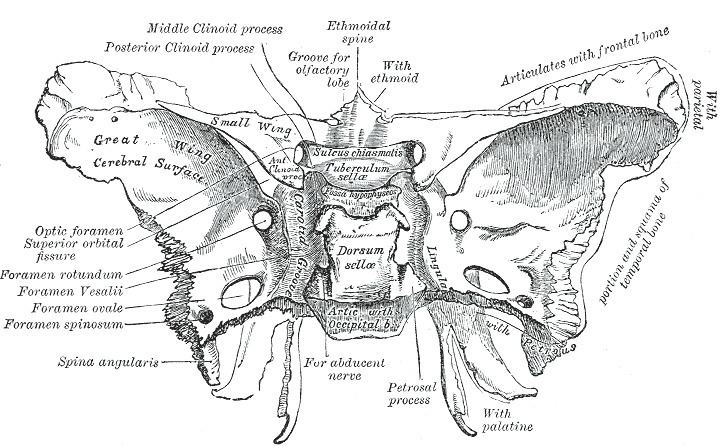Dorlands/Elsevier f_12/12373564 FMA 53154 | TA A02.1.05.035 | |
 | ||
Latin foramen rotundum ossis sphenoidalis | ||
The foramen rotundum is a circular hole in the sphenoid bone that connects the middle cranial fossa and the pterygopalatine fossa.
Contents
Structure
The foramen rotundum is one of the several circular apertures (the foramina) located in the base of the skull, in the anterior and medial part of the sphenoid bone.
The mean area of the foramina rotunda is not considerable, which may suggest that they play a minor role in the dynamics of blood circulation in the venous system of the head.
Development
The foramen rotundum evolves in shape throughout the fetal period, and from birth to adolescence. It achieves a perfect ring-shaped formation in the fetus after the 4th fetal month. It is mostly oval-shaped in the fetal period, and round-shaped after birth (generally speaking). After birth, the rotundum is about 2.5 mm and in 15- to 17-year olds about 3 mm in length. The average diameter of the foramen rotundum in adults is 3.55 mm.
Function
The maxillary branch (V2) of the trigeminal nerve (CN V) passes through and exits the skull via the pterygopalatine fossa and the foramen rotundum.
Etymology
Foramen is the Latin term designating a hole-like opening. It derives from the Latin forare meaning to bore or perforate. Here, the opening is round as indicated by the Latin rotundum meaning round.
